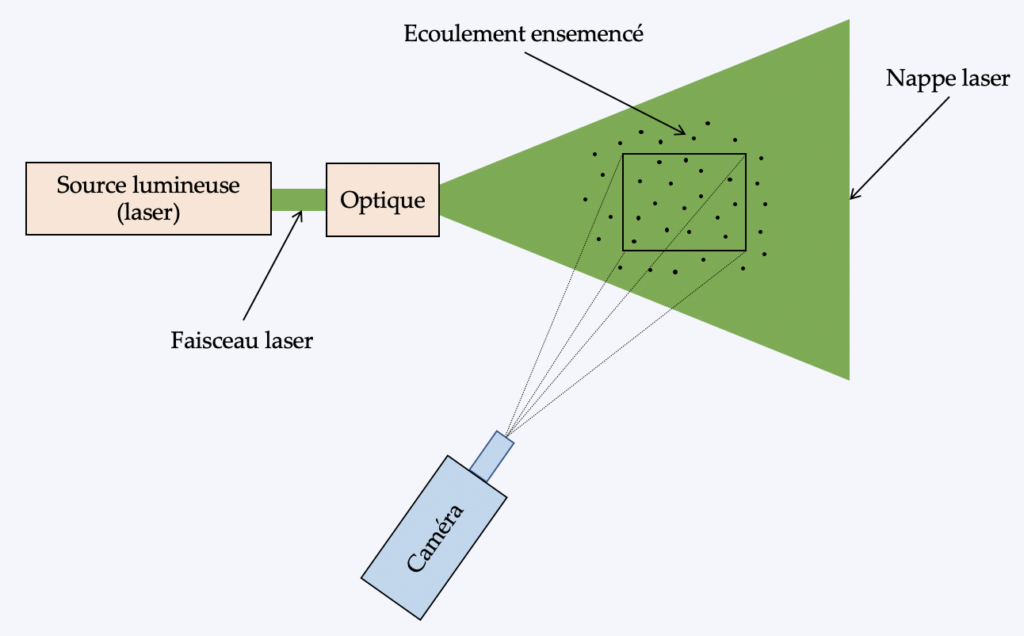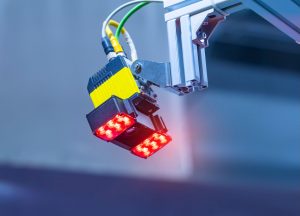PIV(Particle Image Velocimetry ) is a tomographic imaging technique. It measures the flow velocity of fluids seeded with particles (or "tracers"). These tracers must follow the movements (in space and time) of the fluid under study. What's more, they must also be in high concentration and scatter sufficient light (to be easily detectable). This article presents PIV, a light-scattering technique for characterizing fluid flow.
PIV materials and methods
To freeze the movement of these tracers from one image to the next, the measurement requires the formation of two laser beams. In addition, these beams are of very short duration and are superimposed with a small time lag Δt. A camera, positioned at 90° to them, records two successive images. One for each laser pulse of the flow in the illuminated zone. The images are processed by meshing them and calculating the cross-correlation coefficients. From the analysis of each cross-correlation, we deduce the most likely distance traveled by the particles during the interval Δt. This is done for the corresponding area of the flow. Thus, for each pair of recorded images, a two-dimensional mapping of the fluid velocity field is obtained. A schematic diagram is shown below.

Furthermore, technically speaking, a PIV device consists of the following elements:
- a particle generator (e.g. based on commercial incense smoke)
- a laser whose beam is shaped using conventional optical components (lenses, spherical and cylindrical)
- a cooled, high-resolution camera with a telecentric x1 magnification lens
- an electronic chain for image synchronization, recording, storage and processing.
The optical magnification of the optical system is fixed. The only adjustment parameter for velocity measurement is the time Δt, whose value is estimated a priori.
Examples of results
The figure below shows an example of a mean velocity (vector) and vorticity field. (1) (background colors). This is a drop of water with an initial diameter of 1 mm, evaporating in an atmosphere at rest. These results were averaged over 60 seconds, i.e. around 500 instantaneous fields. The water droplet is acoustically levitated. The vortices observed around the drop are induced by the acoustic field. If you would like more information on this subject, please do not hesitate to contact us.

Conclusion
Imasolia offers its PIV expertise to characterize any type of fluid flow in a non-intrusive way in industry or the laboratory. Please use our contact form to tell us about your project. We'll be delighted to put our skills to work for you.
What do you think of PIV as a light scattering technique for characterizing fluid flow? Feel free to comment on the article below!
(1) Rotation intensity



